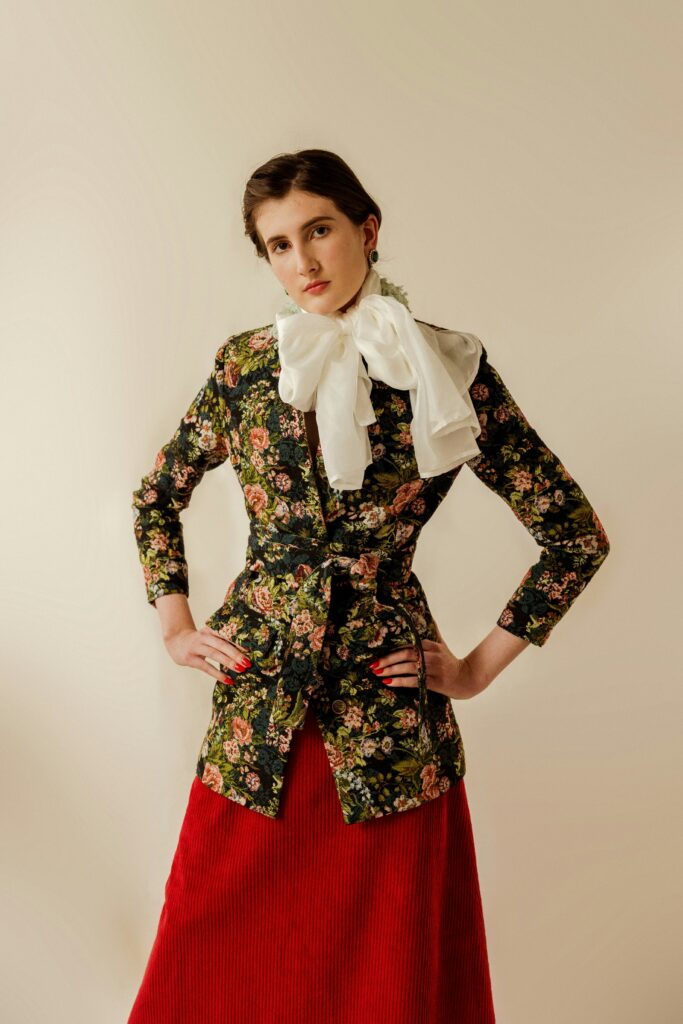

The creator Data, But Make It Fashion presented an interesting observation earlier last week: Florals are out this spring. While it is backed by data, the logic behind it is far more interesting. The popularity of florals has decreased by 15 percent over the past month — a trend we generally shouldn’t see this far into spring. Instead of an increase in floral patterns, we’re seeing growth in the popularity of un-patterned, monochromatic dresses. These kinds of dresses have always had their place in fashion, serving as tried and true rotational staples, but this year they’ve appeared at the forefront. I have two theories as to why we are abandoning florals, and while presented as separate ideas in this article are inherently intertwined.
The initial theory is simple. People are shifting away from spring florals because seasons are no longer the primary stylistic descriptor. While most people alter their closets by season (sweaters in fall and winter, shorts in summer, and so on), many people involved in the fashion scene are far more concerned with the maintenance of their overall aesthetic. Engagement in aesthetics has grown more and more isolatory over time, with the expectation being that you pick an aesthetic and exist strictly within those boundaries. So sure, you might see a coquette girl in florals this spring, but you’ll also see her in florals during fall and winter. While the construction of the items may change to accommodate the season, the overarching patterns and style formulas will not.
The second theory is admittedly more cynical. Many people are talking about the impending recession, the already occurring recession, or the effects of late-stage capitalism. A common metric is that of skirt length. The shorter the skirt, the better economic conditions. While I suppose this pattern has somewhat proven to be true, a correlation has also been drawn between the presence of patterns and the state of the economy. Most recently appearing en-masse during the 2008 recession and both world wars, economic and social uncertainty were key players. While the world wars experienced shifts in women’s fashion due to necessity, they generally featured efficient, streamlined designs, with the majority of women wearing only one outfit a day (as opposed to two or three). With a greater need for fabric to create soldiers’ uniforms, lighter fabrics came into style, with civilian women donning silk and jersey instead of wool. A similar theme was observed during the 2008 crisis, with designers favoring neutrals above vibrant displays of color. Minimalism was the overwhelming theme for the cycle, mirroring the financial constraints of consumers. While in the past fifteen years, people have overwhelmingly shifted to inexpensive fast fashion instead of minimal colors, the sentiment remains the same. Less money usually means less clothes, less color, or less quality.
What’s occurring today is a product of decades of financial decisions I had no part in. So while I don’t yet have enough economic knowledge to fully analyze what’s happening, I can recognize the patterns of the past. 2024 is seeing a decrease in traditional pattern usage. Whether it be as a result of the current economic conditions, the lack of florals signaling a financial crisis, or simply just the progression of contemporary style, both options are simultaneously concerning and heavily intriguing. Will a new pattern replace the spring floral? Or are we concerned for nothing, and it will make its return later this season? Only time will tell, but what I do know for sure is this: whether florals are trending this season or not, wear whatever you want.
Leave a Reply
Your email address will not be published. Required fields are marked *